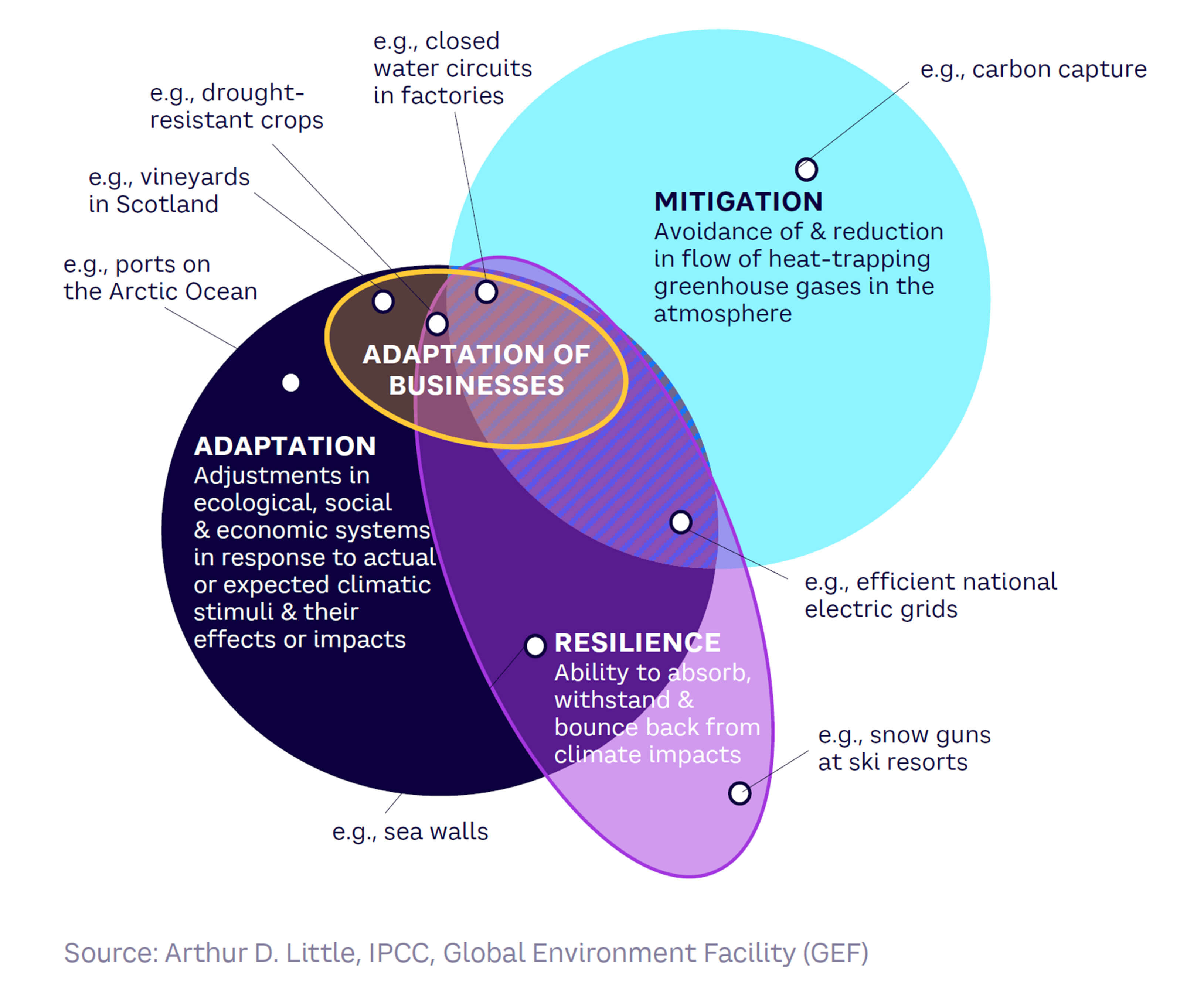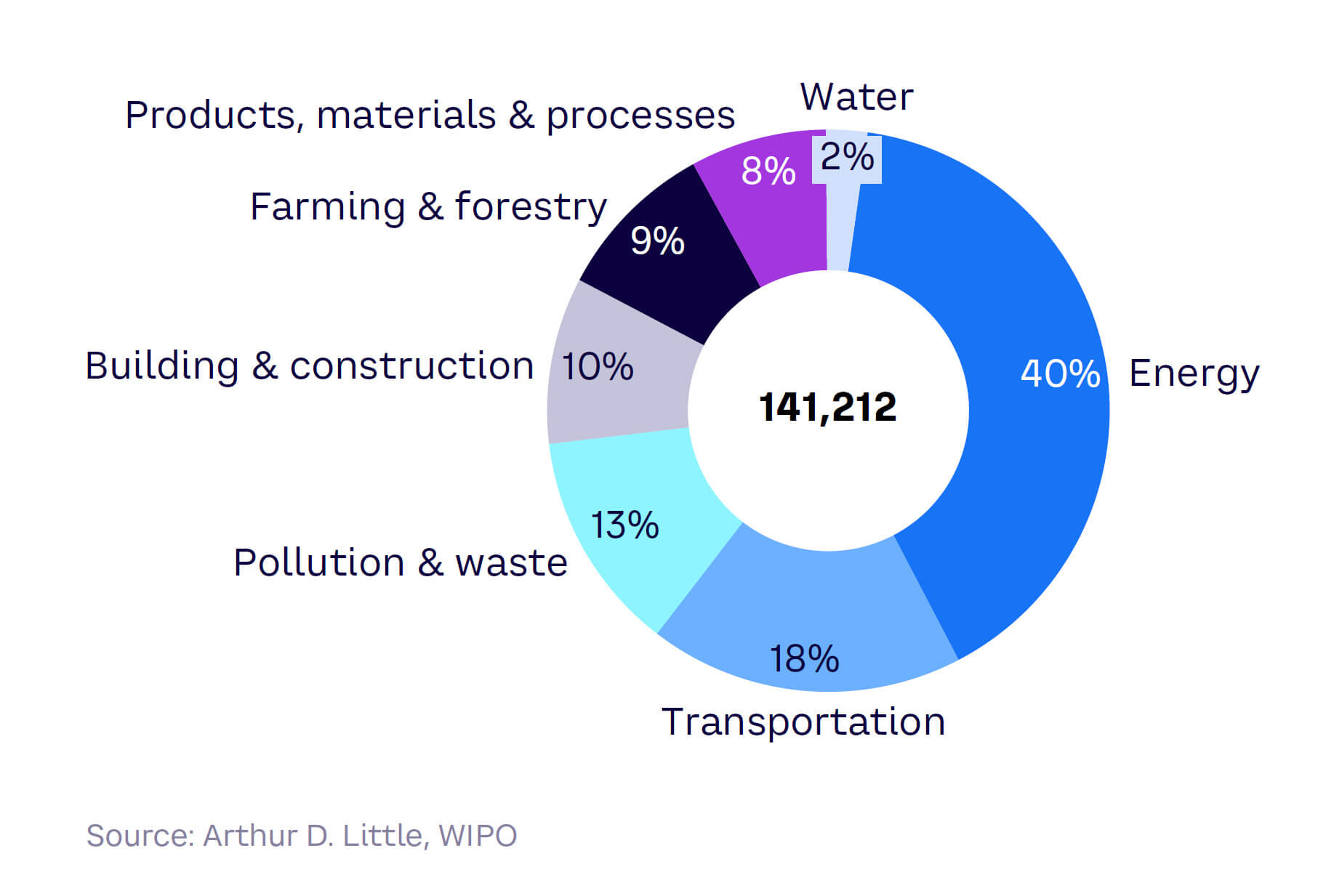
Our focus on adaptation in no way suggests that it should be a substitute for mitigation efforts or is in any way a higher priority. However, it is important to understand the requirements and potential opportunities that adaptation brings, from both a business and technology perspective. To frame this Report, we have based our thinking on a climate impact of +3 ̊C by 2100.[2] As Figure 1 shows, this will have dramatic impacts on agriculture, sea levels, disease, freshwater availability, biodiversity, and extreme weather events, such as wildfires.

A double focus: Businesses & technologies
Clearly, adaptation to climate change is a broad and complex topic. This Report focuses on just two aspects: (1) climate change adaptation from the perspective of businesses and (2) technologies enabling adaptation. This means that the Report addresses policies, infrastructure, and community-based initiatives only to the extent that they can be co-implemented by the private sector and include a technological component. We also do not address wider trends, such as geopolitical turmoil, which will also impact or potentially limit the abilities of businesses to adapt. This chosen scope reflects Blue Shift’s focus on forward-looking technologies. It should not be interpreted to suggest that political, economic, and social changes are secondary to technological enablers.
Adaptation: A subset of the climate change toolbox
As Figure 2 shows, the sustainability conversation is rich and broad and includes several overlapping but distinct goals, among them mitigation, adaptation, and resilience. Business adaptation overlaps partially with each of these goals in various ways, for example:
- Mitigation-promoting adaptation — mostly in the form of
resource-use efficiency (e.g., adapting to lower water resources),
while also preserving existing supplies - Opportunities borne out of adaptation — the creation of new
products and services to accompany the transition to a changing
climate - Resilience — protecting industrial assets, people, and processes
against climate impacts

Adaptation: A plethora of solutions
While climate change mitigation focuses on the release of greenhouse gases (GHGs) into the atmosphere from a range of sources, adaptation is more concerned with addressing a multiplicity of impacts that all occur locally. For example, a community living in a single valley may need to address the drying up of its local river, the exposure of the village to heat waves, and landslides due to mountain slope erosion — using tools that may not be fully scalable or applicable to other locations or issues.
Essentially, this means that the value of adaptation solutions lies in the successful application of technologies to a particular problem at an acceptable cost. Therefore, the technologies to address adaptation needs are specific, numerous, and fragmented. At the same time, technological hype and funding for adaptation tech remain low. It is estimated that less than 10% of all climate funding went to adaptation in 2020–2021.[3]
To help identify green technologies, WIPO established the free, online WIPO GREEN Marketplace for Sustainable Technology platform in 2013, which catalogs around 150,000 technologies and patents for solutions to environmental or climate change challenges across seven large application domains (see Figure 3).

Technology for climate change adaptation
In this Report, we aim to cut through the noise by responding to a simple problem statement: how can decision makers harness technology to help their businesses face the diverse, multivariate, and ambiguous impacts of climate change? To answer this question, we followed a seven-step approach:
- Outline the main challenges companies face in adapting to
climate change. - Set the stage by assuming a “+3°C by 2100” trajectory in 2040.
- Draw out projections combining possible human responses
to climate change. - Use design fiction methods to amplify the concrete impacts
of specific projections. - Detail functional expectations and relevant technologies
for each projection and challenge. - Identify the no-regret moves: solutions, enabling technologies,
and capabilities that should be developed now to be able to adapt. - Provide insights to help companies embark on their adaptation
journey: how to predict, decide, and build capabilities.
The Report is based on a combination of sources, including:
- Interviews — more than 40 interviews with corporate executives,
climate adaptation experts, VCs, and start-ups - Surveys — two surveys, one with corporate executives and one
with global academic experts, with a total of 70 respondents - Collaboration with WIPO, covering the requirements for
adaptation technologies - Documentary sources, including the 2022 “WIPO Green
Technology Book” (“Adaptation edition”) and the IPCC’s “AR6
Synthesis Report: Climate Change 2023,” among others - Collaboration with design agency Making Tomorrow, creating
design fiction and artifacts for each selected projection
The collective Making Tomorrow gathers experts in foresight, anthropologists, economists, but also makers, designers, and science fiction authors. It is a pioneer in foresight and design fiction approaches.” http://making-tomorrow.mkrs.fr/
“Adaptation technologies are a highly diverse field of innovation, which to some degree live in the shadows of the more dominating mitigation technologies. One of the reasons for this is exactly this diversity, which may make it harder to recognize both what is needed where and when, and what could be the solution. Furthermore, many solutions for contributing to adaptation are already there and in use but will gain new importance, while others will be based on new technologies, some advanced, others more simple.”
—Peter Oksen, WIPO
